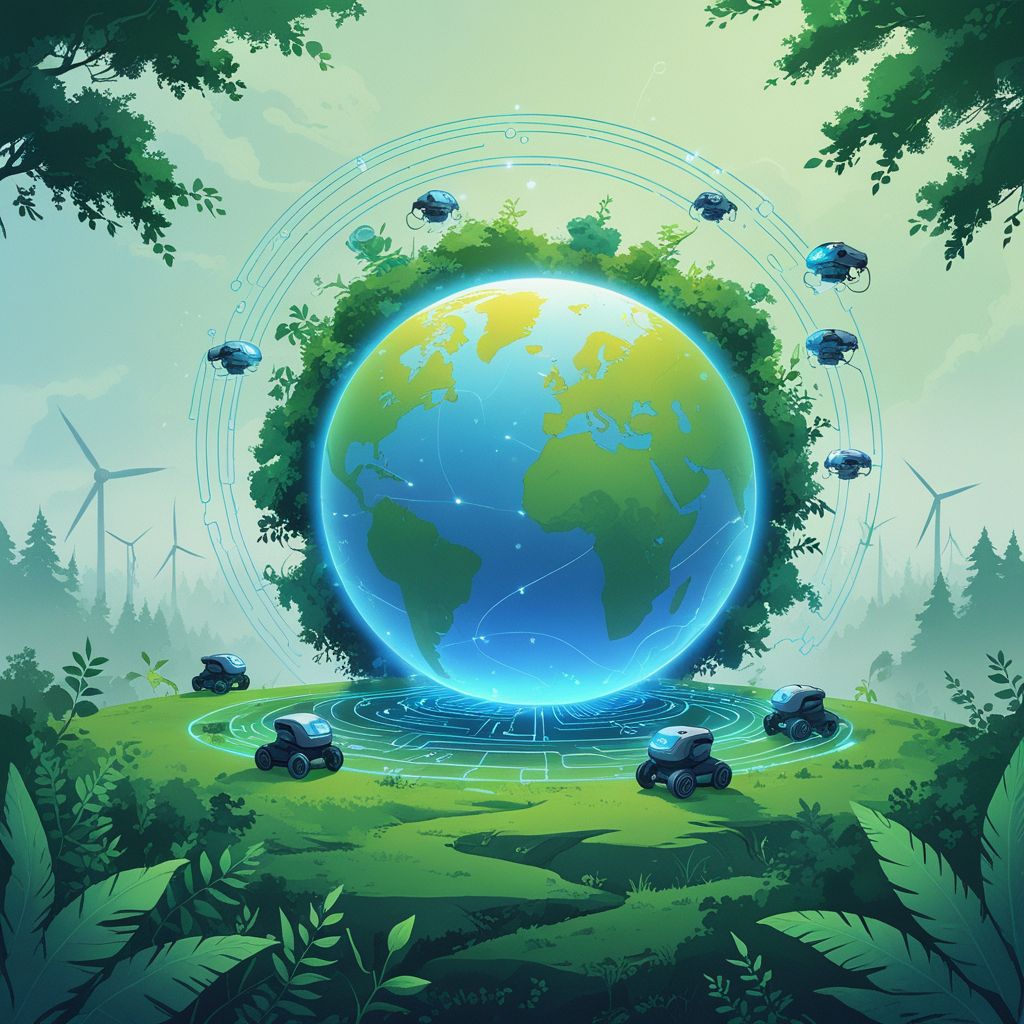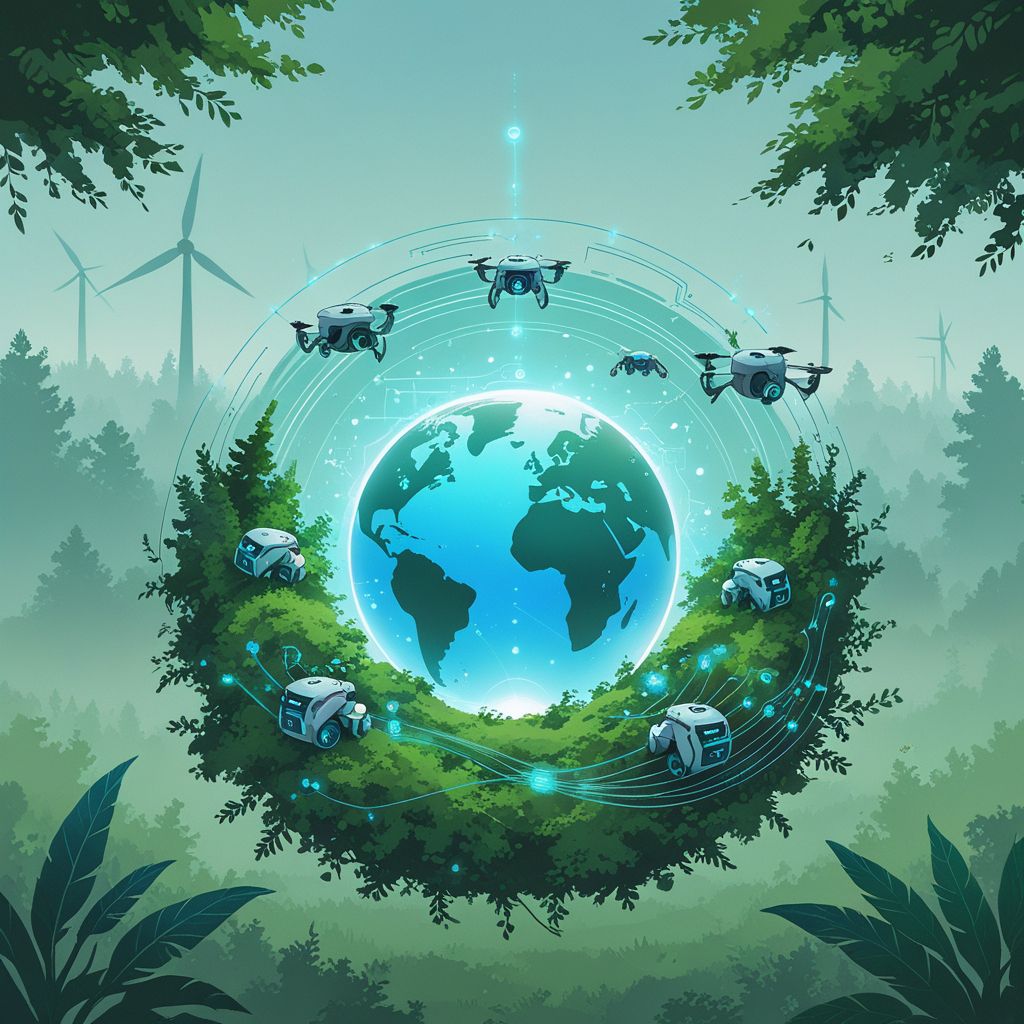AI can play a major role in protecting the environment by improving monitoring, reducing waste, optimizing resource use, and enabling smarter decisions. Here’s a breakdown of how AI is used (and can be used) to protect the environment:

🌍 1. Climate Change Monitoring and Action
- Climate modeling: AI helps simulate future climate scenarios to improve policy decisions (e.g., Google’s DeepMind + Met Office).
- Carbon tracking: AI tracks emissions from industries, cities, or even individual products.
- Tool example: Microsoft’s AI for Earth – tools for carbon monitoring and sustainability modeling.
🌳 2. Forest and Wildlife Protection
- Deforestation detection: Satellite data analyzed by AI detects illegal logging in near real-time.
- Example: Global Forest Watch uses AI + satellites to track forest changes.
- Wildlife monitoring: AI in camera traps identifies animal species and tracks poaching.
- Example: PAWS (Protection Assistant for Wildlife Security) uses AI to predict poaching risks.
💧 3. Water Conservation and Management
- Leak detection: AI analyzes sensor data to find leaks in water systems quickly.
- River pollution tracking: Drones + AI monitor water bodies for pollutants and algae blooms.
- Flood prediction: AI predicts floods with satellite data and real-time weather inputs.
🏙️ 4. Smart and Sustainable Cities
- Traffic optimization: AI reduces traffic jams and emissions through smart traffic lights.
- Example: Google’s Project Green Light.
- Energy-efficient buildings: AI adjusts lighting, heating, and cooling in real-time.
- Urban planning: AI helps design cities with green spaces and efficient layouts.
🌾 5. Sustainable Agriculture

- Precision farming: AI recommends the right amount of water, fertilizer, and pesticides.
- Tool: IBM Watson Decision Platform for Agriculture.
- Pest and disease detection: AI can analyze crop images and detect issues early.
- Yield prediction: Helps avoid overproduction and reduce food waste.
♻️ 6. Waste Management
- Smart recycling: AI-driven robots and systems sort recyclables from trash.
- Example: AMP Robotics – uses AI to identify and sort materials.
- Waste reduction: AI helps optimize supply chains to minimize overproduction and packaging.
🌬️ 7. Air Quality Monitoring
- Real-time pollution detection: AI analyzes data from sensors and predicts pollution spikes.
- Public health alerts: Helps governments and individuals act proactively.
🛰️ 8. Satellite and Drone Monitoring
- Land use analysis: Detect illegal mining, habitat loss, urban sprawl.
- Disaster response: AI speeds up analysis of satellite images after hurricanes, fires, etc.
🔬 Bonus: AI Research for Environmental Solutions
- Protein design for carbon capture (e.g., DeepMind’s AlphaFold).
- AI for bioengineering sustainable materials.
Tools and Initiatives to Explore:
- 🌱 Google Earth Engine
- 🌊 UN AI for Good Global Summit
- 🛰️ European Space Agency’s AI4EO (AI for Earth Observation)
- 💧 AI4Water
- ⚡ Open Climate Fix

No Responses